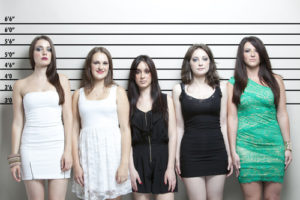
The top 5 causes of eyewitness misidentification are:
- limitations in human memory,
- witness stress and anxiety,
- suggestive or misleading police procedures,
- cross-race biases, and
- the fact that witnesses tend to focus more on weapons than a perpetrator’s identity.
“Eyewitness misidentification” refers to when a crime victim or eyewitness mistakenly identifies someone as the perpetrator of a crime even though that person did not commit the crime.
The two main consequences of these misidentifications are:
- innocent parties get arrested, and
- investigations end earlier than they should.
Senate Bill 923 is a new California law that came into existence in 2018. The goal of SB 923 is to help prevent mistaken eyewitness identifications in the State. The bill establishes several new standards that must be used in eyewitness identification procedures, as used in California criminal investigations.
What is eyewitness misidentification?
Eyewitness misidentification is when a crime victim or eyewitness mistakenly identifies someone as the perpetrator of a crime even though that person did not commit the crime. The witness identifies the wrong person.
Misidentification can happen during:
- lineups (where a witness is shown a group of individuals),
- photo arrays (where a witness is shown a group of photos),
- show-ups (where a witness is shown a single person, often near the crime scene),
- voice lineups (where a witness listens to different voices), and
- in-court identifications (where a witness is asked to identify the perpetrator in court).
What are the top 5 causes of eyewitness misidentification?
The top 5 reasons for eyewitness misidentification are:
- limitations in human memory – it is impossible for the human mind to take in and remember everything that a person sees. Certain details like a person’s appearance, hair and eye color, weight, and height typically get overlooked.
- stress and anxiety – criminal activity causes anxiety and stress in a witness. These in turn decrease a person’s ability to observe, and later recall, specific facts.
- suggestive police procedures – police often use techniques of presenting suspects or perpetrators that are suggestive or misleading. For example, if an officer knows which person the perpetrator is in a lineup, he may give subtle clues as to who the witness should pick.
- cross-race biases – this is the tendency for people to more easily recognize faces of the race that they are most familiar with (which is typically their own race).
- a focus on weapons – witnesses of a crime usually focus more on weapons and not the identity of the perpetrator. This means that while a witness can remember a weapon in great detail, he typically cannot provide the same details regarding the person committing the crime.
What happens when an eyewitness misidentifies a person?
There are two very serious consequences of an eyewitness misidentification. These are:
- a criminal investigation ends earlier than it should, and
- innocent people get arrested and charged with a crime.
As to the latter, note that over 75% of cases so far overturned through DNA testing involved some form of eyewitness error. Further, since 1991, 66 people in California have been wrongly convicted of a crime, and imprisoned, because of an eyewitness misidentified them. Last year alone, eyewitness misidentifications played a role in 12 out of 13 DNA-based exonerations in California.
What is Senate Bill 923?
Senate Bill 923 is a new California law. It came into existence in 2018. The goal of SB 923 is to help prevent mistaken eyewitness identifications in the State. The bill establishes several new standards that must be used in eyewitness identification procedures, as used in California criminal investigations.
Some of these standards include:
- prior to conducting the identification procedure, the eyewitness must provide a description of the person suspected of committing the crime.
- officers conducting a lineup must not have knowledge of a suspect’s identity (so as to prevent suggestiveness).
- prior to the procedure, eyewitnesses should be told that the perpetrator may or may not be in the lineup or photos.
- all eyewitnesses shall be separated when viewing an identification procedure.
- nothing shall be said during the procedure that may influence an eyewitness’ identification of the alleged suspect.
- non-suspect “fillers” must be used in a lineup that match the eyewitness’ description of the suspect.
- immediately after a lineup, the witness must provide a statement that voices his level of confidence in the identification.
- the entire identification procedure must be videotaped.
What was the law prior to Senate Bill 923?
SB 923 significantly changed California’s existing law regarding eyewitness identification procedures. Under the State’s old law, some law enforcement agencies in certain California counties did have procedures in place to help improve the reliability of eyewitness identifications. However, there were no statewide standards governing eyewitness identifications

